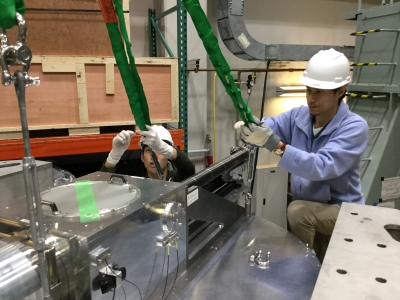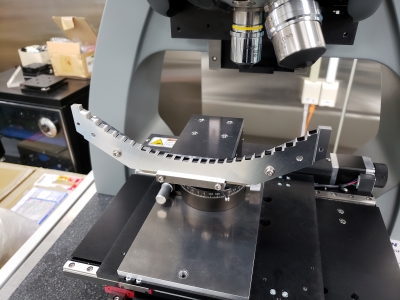|
I developed SWIMS-IFU, an integral field unit for a near-infrared multi-object spectrograph SWIMS, and summarized the results in my master's thesis.
Integral field spectroscopy (IFS) is an optical-infrared observation technique to obtain spectral information over the two-dimensional field of view by dividing a telescope image and rearranging them in a line.
In recent years, IFS observations have been actively carried out to obtain spatially resolved spectral information of the interior of nearby galaxies and to conduct wide-area IFS surveys.
However, the current near-infrared IFS instruments have a narrower field of view of only a few arcseconds compared to optical IFS instruments, making it difficult to observe the entire surface of nearby galaxies or conduct a wide-field IFS survey.
Therefore, we are developing the SWIMS-IFU, an integral field unit that adds a wide-field IFS capability to SWIMS, the near-infrared multi-object spectrograph of TAO telescope.
SWIMS-IFU is an optical unit consisting of 80 mirror facets and one doublet lens, and inserting it into the telescope focal plane realizes integral field spectroscopy. This adopts an image slicer method in which an object image is divided and reflected in different directions by the image slicer, an optical element consisting of stacked strips of mirror facets oriented in different directions. The divided images are then rearranged in a line in the SWIMS-IFU optics and directed to the subsequent SWIMS optics. The SWIMS-IFU thus can perform integral field spectroscopy with a wide field of view of 17".2x12".8 (when mounted on the TAO telescope), more than four times larger than that of existing near-infrared integral field spectrographs. In addition, since SWIMS can observe a wide wavelength range of 0.9-2.5μm simultaneously and has much available observing time as an instrument for a university telescope, it is expected to construct an unprecedented large near-infrared integral field spectroscopy sample.
However, the development of SWIMS-IFU is very difficult because of its mechanical size restriction, weight restriction, and complexity of optical system. In particular, it is difficult to create 80 mirror facets with a diameter of a few millimeters and align their positions in a complex structure. Therefore, we adopted an ultra-precision cutting technique, in which we used a high-precision machine with a nanometer order operational accuracy, to process multiple mirror facets on a single metal workpiece and greatly reduce the alignment procedure.
In my Master’s thesis, I evaluated a slit mirror array and confirmed that its quality meets our requirements. The slit mirror array is an optical element consisting of 26 spherical mirrors machined into a single metal workpiece. Although the requirements are very strict, a shape error of P-V < 200nm, surface roughness of RMS < 10nm, and misalignment between mirrors of < 20μm, we could achieve these requirements. The slit mirror array was the first completed optical element of SWIMS-IFU and demonstrated that an optical element with the required quality can be manufactured using our ultra-precision cutting technique established over the years.
Following the completion of the slit mirror array, I worked on test processing of a pupil mirror array. The pupil mirror array is an optical element with 26 mirror facets machined into a single metal workpiece. To reduce aberrations, 14 mirrors are off-axis ellipsoidal and the remaining 12 are spherical. Each mirror facet is oriented in different directions from each other, making its fabrication and evaluation more difficult than the slit mirror array. While the test processing confirmed that the surface profile and surface roughness met the requirements, we could not confirm the quality of alignment between mirror facets due to insufficient accuracy of the measurement. Therefore, the measurement accuracy has to be improved in the future.
In my Master’s thesis, the first optical element of SWIMS-IFU was completed, and we could steadily proceed to the next step. We will continue to develop the remaining optical elements and make every effort to complete the SWIMS-IFU and make the first observations with it.

▲working on SWIMS in Hawaii

▲Measurement of the test-processed pupil mirror array
|


